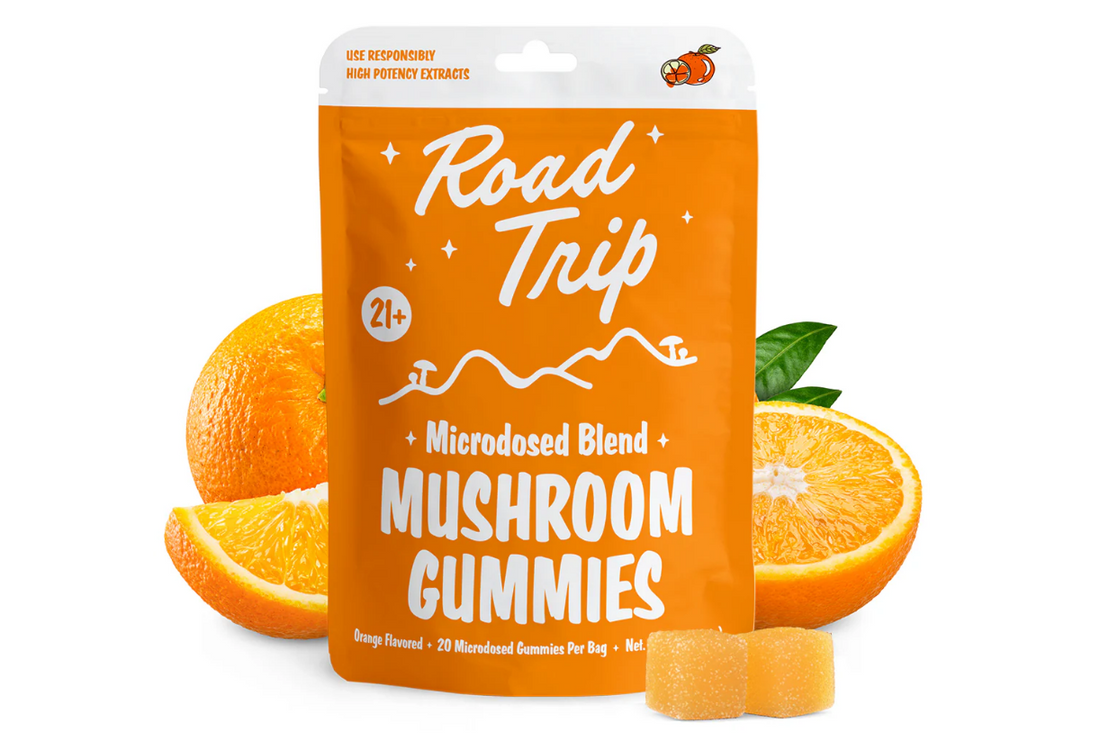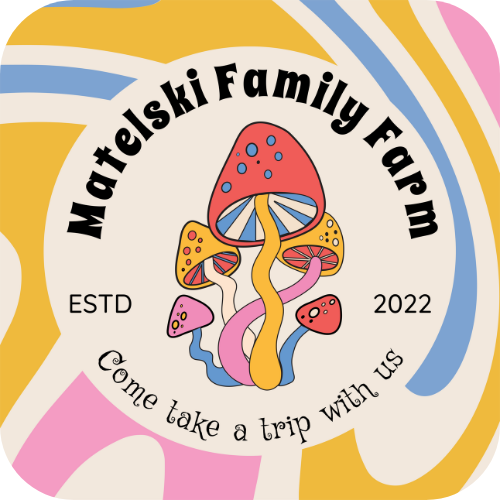
Flavor & Function: How Makers Mask Mushroom Taste in Delicious Gummies
Share
Mushrooms bring unique functional benefits—but their natural, earthy taste can be polarizing. That’s where formulation and culinary design meet science: makers who craft microdosed functional mushroom gummies must solve two problems at once. First, preserve the active mushroom profile and product integrity. Second, make the end product pleasant enough that consumers enjoy taking it regularly.
Below, we break down the most effective, professional techniques used to mask mushroom taste while maintaining transparency, safety, and quality—so buyers know what to look for when shopping for items like the Road Trip Gummy — Microdosed Gummies.
1) Start with clean, high-quality mushroom extracts
Taste-masking works best when the base ingredient is consistent and free from off-notes caused by poor sourcing or unstable extracts. Reputable makers begin with standardized extracts or well-processed fruiting-body powders that have predictable organoleptic properties (taste, aroma, texture). Ask for third-party Certificates of Analysis (COAs) and clear ingredient lists—these are signals of transparency and good manufacturing practice.
2) Natural flavor pairings: the first line of defense
One of the most effective, consumer-friendly ways to mask earthiness is flavor pairing. Citrus, berry, tropical fruits, and classic dessert profiles (vanilla, caramel) are chosen because they offer aromatic brightness that complements and often covers mushroom earthiness without overpowering it. For gummies:
- Citrus & berry blends provide acidity and aromatic lift.
- Tropical fruits (mango, passionfruit) add sweetness and a juicy mouthfeel.
- Vanilla or honey notes smooth the finish and add perceived richness.
Makers often layer natural fruit purees, essential-oil extracts, or botanical distillates to achieve a clean, recognizable flavor profile.
3) Texture engineering: mouthfeel matters
Gummy texture isn’t just about chew—it's a powerful tool for masking flavors. A well-formulated gummy uses pectin or gelatin with a carefully tuned sugar-to-gelling agent ratio so that the flavor release is gradual and pleasant. Some makers use a slightly soft, yielding chew that releases flavor slowly—this reduces the initial mushroom hit and replaces it with the chosen fruit or dessert notes.
Coatings and outer shells (a thin sour or sweet dusting) also shape first impressions, enabling immediate fruit-forward impact before the mushroom notes appear.
4) Encapsulation & microencapsulation techniques (non-actionable overview)
Advanced formulators may use encapsulation technologies to protect delicate actives and modulate flavor release. In consumer products, this can mean tiny coatings or encapsulated extracts that reduce bitter or earthy sensation on the tongue while still releasing the beneficial constituents during digestion. This is a technical approach and should always be paired with testing for stability and bioavailability.
5) Sweeteners, acids, and bitterness blockers—used judiciously
Sweeteners (sugar, erythritol, or low-glycemic blends) combined with citric or malic acid create balancing tastes that distract from earthiness. Bitterness-blocking food ingredients—polysaccharides, certain proteins, and flavor modulators—may be included in small amounts to blunt undesirable notes. Responsible producers avoid high levels of masking agents that hide poor raw material quality; good taste-masking complements good sourcing, not replaces it.
6) Aromatics & terpenes: scent is half the flavor
Smell drives taste. Makers sometimes incorporate natural aromatics (citrus peel oils, berry distillates, or spice essences) to create a pleasant nose that influences perceived flavor. Terpene-rich botanicals—when included legally and responsibly—can provide subtle aromatic complexity that elevates the experience without being intrusive.
7) Transparency: labeling, COAs, and manufacturing standards
Taste is important—but safety and trust are paramount. Look for brands that publish COAs, list extract types (e.g., standardized fruiting body extract), and state manufacturing standards such as GMP (Good Manufacturing Practice). Clear labeling showing ingredients, batch testing, and shelf-life information demonstrates both quality control and respect for the consumer.
8) Packaging & shelf life: preserving flavor integrity
Packaging design affects flavor longevity. Oxygen barriers, light-resistant containers, and desiccant inserts protect gummies from oxidation and moisture—both of which can change taste and texture. Quality makers test shelf stability and include best-by dates so consumers get consistent flavor and potency.
9) Sensory testing and consumer feedback loops
Top brands perform iterative sensory testing—panel testing that pairs culinary experts and regular consumers—to refine flavor profiles. Feedback loops help fine-tune sweetness, acidity, and texture so the product performs in real-world conditions, not just in the lab.
Shopping signals: how to choose a tasty, trustworthy mushroom gummy
When evaluating products (including items like the Road Trip Gummy — Microdosed Gummies, look for:
- Full ingredient transparency and clear extract labeling.
- Published third-party lab results (COAs) for purity and contaminants.
- Natural flavor systems (real fruit purées, natural extracts).
- Descriptions of texture and serving conditions (how to store, avoid heat).
- Customer sensory reviews that reference flavor consistency.
FAQs
Q: Are mushroom gummies supposed to taste like mushrooms?
A: Not necessarily. High-quality formulations often mask earthy notes with natural flavors and texture engineering, producing a fruit-forward or dessert-like taste.
Q: What’s a Certificate of Analysis (COA), and why does it matter?
A: A COA is a lab report that verifies ingredient purity and checks for contaminants. It’s a key trust signal for any botanical product.
Q: Do flavor masks hide poor-quality ingredients?
A: Taste-masking should complement—not replace—good sourcing. Reputable makers use flavor craft to improve palatability while still starting with clean, tested extracts.
Q: How should I store mushroom gummies to preserve flavor?
A: Store in a cool, dry place away from direct sunlight; follow the product’s best-by date and packaging recommendations.
Q: Where can I learn more about a specific gummy’s safety and testing?
A: Check the product page for lab results, manufacturing practices, and ingredient sourcing—brands that publish these details are easier to trust. For example, view product details for the Road Trip Gummy — Microdosed Gummies.
